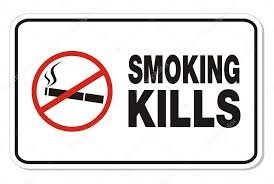Introduction
Smoking is one of the leading causes of preventable diseases and death worldwide. Despite the many health warnings, millions of people continue to smoke, not fully understanding the long-term consequences of their habit. It is essential to recognize how smoking is injurious to health and the severe risks it poses to nearly every organ in the body.
In this article, we will explore the various health dangers associated with smoking, the diseases it causes, and how quitting can greatly improve overall health and quality of life.
The Composition of Tobacco Smoke
Before delving into how smoking is injurious to health, it’s essential to understand what happens when a person smokes. Tobacco smoke contains over 7,000 chemicals, many of which are harmful to the body. Among them, at least 70 are known to cause cancer, and others can lead to chronic diseases like heart disease, stroke, and lung disease. Some of the most dangerous chemicals in cigarette smoke include:
- Nicotine: The addictive substance that makes quitting smoking difficult.
- Tar: A sticky substance that coats the lungs and causes respiratory problems.
- Carbon monoxide: A poisonous gas that reduces the amount of oxygen in the blood.
- Formaldehyde: A carcinogen often used in embalming fluids.
These substances wreak havoc on the body, contributing to a wide range of health problems.
Respiratory Diseases Caused by Smoking
One of the most direct and damaging effects of smoking is on the respiratory system. How smoking is injurious to health becomes immediately apparent when you look at the lung-related diseases that it causes.
a. Chronic Obstructive Pulmonary Disease (COPD)
COPD is a group of lung diseases that includes emphysema and chronic bronchitis. These conditions cause breathing difficulties, coughing, and a limited ability to engage in physical activity. Smoking is the primary cause of COPD, and it destroys the air sacs in the lungs, making it harder to breathe.
b. Lung Cancer
Smoking is the leading cause of lung cancer, responsible for approximately 85% of cases. The carcinogens in tobacco smoke damage the DNA of cells in the lungs, leading to the uncontrolled growth of cancerous cells. Lung cancer is often diagnosed at a late stage, making it one of the most fatal cancers.
c. Other Respiratory Problems
Smoking also increases the risk of other respiratory infections such as pneumonia, bronchitis, and tuberculosis. It damages the cilia in the airways, which are responsible for clearing out bacteria and other pathogens. This makes the lungs more vulnerable to infections and respiratory illnesses.
Cardiovascular Effects of Smoking
Smoking is not only bad for the lungs but also has devastating effects on the cardiovascular system. How smoking is injurious to health is evident when we examine the impact it has on the heart and blood vessels.
a. Heart Disease
Smoking is a significant risk factor for coronary heart disease (CHD). The chemicals in tobacco smoke damage the blood vessels, leading to plaque buildup in the arteries. This narrows the arteries and restricts blood flow to the heart, increasing the risk of a heart attack.
b. Stroke
Smoking doubles the risk of stroke, as it contributes to the narrowing of blood vessels and increases the likelihood of blood clots. A stroke occurs when blood flow to the brain is interrupted, either due to a clot or a ruptured blood vessel. Smoking raises blood pressure, which further damages the blood vessels and increases the risk of stroke.
c. Peripheral Artery Disease (PAD)
Smoking is also a major cause of peripheral artery disease, a condition where the blood vessels in the limbs become narrowed or blocked. This leads to reduced blood flow to the legs and can result in pain, difficulty walking, and in severe cases, amputation.
Cancer Risks Associated with Smoking
In addition to lung cancer, smoking is linked to several other types of cancer, making how smoking is injurious to health even more concerning. Tobacco smoke contains numerous carcinogens that can cause damage to cells throughout the body.
a. Oral Cancer
Smoking is a leading cause of oral cancer, affecting the mouth, tongue, and throat. The chemicals in tobacco smoke irritate the tissues in the mouth, leading to cell mutations that can develop into cancer. Smokers are six times more likely to develop oral cancer compared to non-smokers.
b. Esophageal Cancer
The esophagus is another area affected by smoking. The carcinogens in tobacco smoke increase the risk of esophageal cancer, a cancer that affects the tube that connects the mouth to the stomach. Symptoms include difficulty swallowing, weight loss, and chest pain.
c. Bladder Cancer
Cigarette smoking is the primary cause of bladder cancer. The toxins in tobacco smoke are absorbed into the bloodstream and pass through the kidneys, where they are concentrated in the bladder. Over time, this can damage the bladder’s lining and lead to cancer.
d. Pancreatic Cancer
Pancreatic cancer is another deadly cancer linked to smoking. The chemicals in tobacco smoke can damage the pancreas and increase the risk of this type of cancer. Pancreatic cancer is often diagnosed at an advanced stage, making it difficult to treat.
Smoking and Its Effect on the Immune System
Smoking weakens the immune system, making the body more susceptible to infections and diseases. How smoking is injurious to health extends to the immune system, which becomes less effective at defending the body from harmful invaders.
a. Weakened Immune Response
The toxins in tobacco smoke interfere with the function of immune cells, reducing the body’s ability to fight off infections. Smokers are more likely to develop respiratory infections like pneumonia and bronchitis, as their immune systems are compromised.
b. Autoimmune Diseases
Smoking is also linked to an increased risk of autoimmune diseases such as rheumatoid arthritis and multiple sclerosis. These conditions occur when the immune system attacks healthy tissues, and smoking can trigger or exacerbate the development of these diseases.
Reproductive Health Risks of Smoking
Smoking has a significant impact on reproductive health, both for men and women. How smoking is injurious to health becomes apparent when we look at the effects of smoking on fertility, pregnancy, and sexual health.
a. Male Infertility
In men, smoking can reduce sperm count and motility, making it harder to conceive. It also increases the risk of erectile dysfunction (ED), as smoking can damage the blood vessels and reduce blood flow to the penis.
b. Female Infertility
In women, smoking can lead to difficulty getting pregnant by affecting the fallopian tubes and ovaries. Smokers are more likely to experience early menopause, which can affect fertility. Women who smoke also have a higher risk of complications during pregnancy, including premature birth, low birth weight, and stillbirth.
c. Secondhand Smoke and Pregnancy
Pregnant women who are exposed to secondhand smoke face an increased risk of miscarriage, preterm birth, and birth defects. Secondhand smoke also harms the baby’s lung development, leading to respiratory problems later in life.
The Benefits of Quitting Smoking
While smoking causes significant harm to health, quitting can reverse many of the negative effects. How smoking is injurious to health can be mitigated by stopping the habit, as the body begins to heal and recover.
a. Immediate Health Benefits
- Within 20 minutes: Heart rate and blood pressure drop to normal levels.
- Within 12 hours: Carbon monoxide levels in the blood decrease, and oxygen levels return to normal.
- Within 1 to 9 months: Lung function improves, and coughing and shortness of breath decrease.
b. Long-Term Health Benefits
- Within 1 year: The risk of heart disease is halved compared to that of a smoker.
- After 5 years: The risk of stroke is significantly reduced.
- After 10 years: The risk of lung cancer is reduced by half.
- After 15 years: The risk of heart disease is similar to that of a non-smoker.
At last passage
Understanding how smoking is injurious to health is crucial for anyone considering quitting or those who are already smokers. The risks associated with smoking are widespread, affecting nearly every organ in the body and leading to life-threatening diseases. However, quitting smoking can significantly improve your health and reduce your risk of serious conditions.
If you or someone you know is struggling with smoking addiction, seeking support from healthcare professionals and using cessation resources can make the transition to a smoke-free life much easier.




